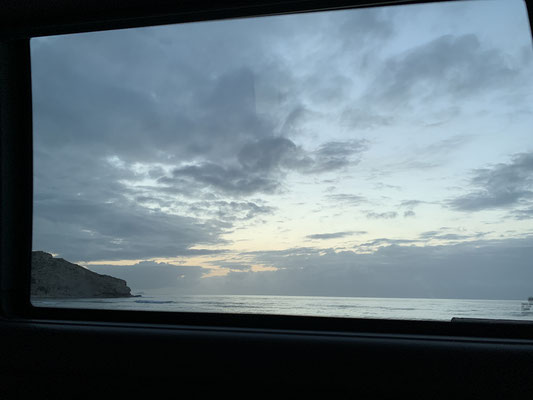
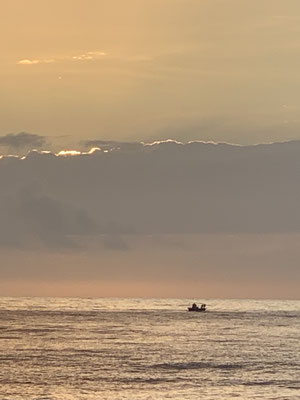
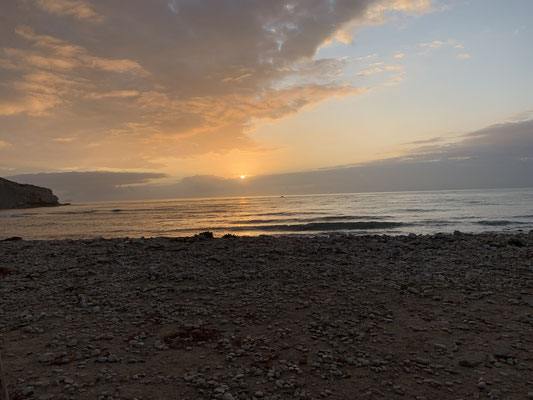
When we wake up this morning, we are standing on the beach with Hector, just like yesterday - but with one major difference. Today's perspective has a whole new dimension. When I push up the blind, the sunrise is just around the corner. We are looking directly out to sea. And that is precisely the difference to all the spots of the past. We are not looking at the beach and the sea, but at first I only see the sea. - I quickly raise my head to make sure that the beach is still there, so that we don't get our feet wet. But everything is fine so far. Our position is just above the sea.
First, we open the door and stick our feet out. It's still a little chilly, but the view has to be appreciated. And then it's there, the sun. It slowly rises from the sea. A little hidden at first, behind clouds. But the sight of the rising sun is still something very special. Sunset can only be topped by sunrise. The way the colors of the sky, the sea and the entire coastline change within minutes, no, seconds, overwhelms me every time. - We quickly make a coffee and enjoy the view. - It tastes particularly good today. With Starbucks coffee, we have found a good, slightly chocolaty alternative to our Van Dyck coffee.
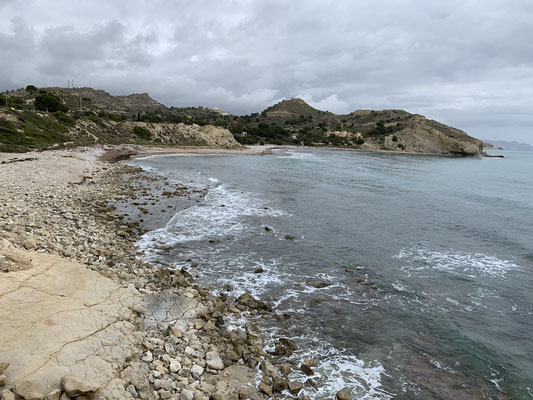
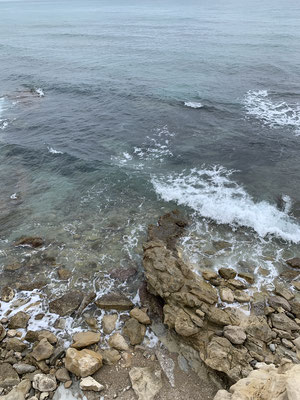
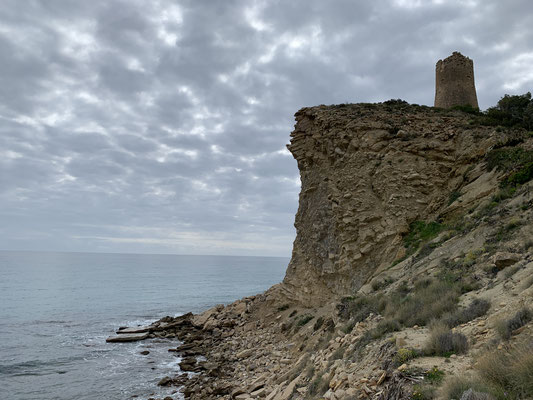
Since the next paragraph is about figures, data, facts and our bookkeeping, I, Torgit, will take over. - And that's when it happened: We had been expecting to receive mail from the country we were traveling in for some time. About wild camping or some other traffic offense. It's inevitable when you travel so much. We receive a message from Cologne that we have mail from DGT: Direcciòn General de Tráfico, Leon, España. A 'notice of violation of traffic regulations in Spain'. - We swallow hard and start reading. - Four pages. So it seems to be a very serious offense. The best thing first: the letter is written in German. And easy to understand. We've seen very different official letters, especially in Portugal. It takes us a while to understand it, because the most important points are hidden inconspicuously in a lot of text:
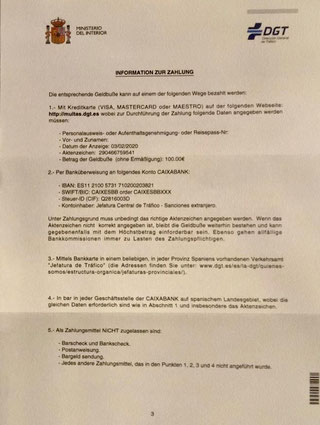
We have to pay a fine of € 100.
Ok, we had feared worse. Why exactly? Well, we were driving too fast: 69 kmh instead of the permitted 60 kmh. We're beginning to understand everything: we were speeding on February 3, the letter is dated February 6.
In my entire life in Germany, I have never experienced German fines being imposed so quickly.
For us, something like this takes several weeks or months.
Die nächste Überraschung ist: Wenn man innerhalb von 20 Tagen bezahlt, verringert sich das Bußgeld um die Hälfte. Also „nur“ € 50,-.
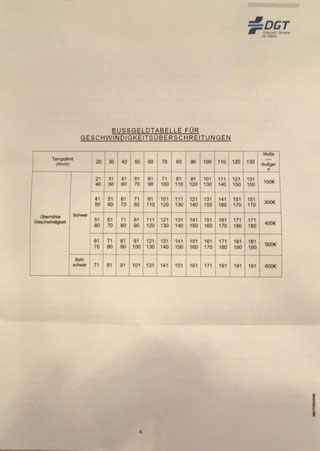
I think it's great. So pay quickly. How? There are so many ways to pay, it fills a whole A4 sheet, photo attached. You can pay on a homepage by credit card and ID card, or simply by bank transfer. You can find the whole sheet in the photos. I decide to pay on the homepage, let's see if my rudimentary Spanish is good enough. And here's the next surprise: the homepage is in English. I enter all our details and expect an error message, because we have an umlaut in our surname and the Spanish language doesn't recognize that. But oh wonder, my details are accepted without any problems. I can pay by credit card, save a receipt and receive an email with proof that I have paid. Everything works smoothly. I am thrilled. I've had very different experiences, especially with our Dutch neighbors. Enclosed is also the table of fines for speeding. What surprises us is that we could have driven 30kmh too fast for the same fine. That's practically a bargain. I'm still happy, but Marc is already urging us to set off again. So back to the gypsy life. I hand over to the head gypsy.
marc: As we have often used the term gypsy or WAGENVOLK, I would like to take a brief stand on this. Especially because the term is rejected by Sinti and Roma. And certainly rightly so. But gypsies are also ascribed an unsteady, unattached, deviant or delinquent lifestyle. - We can identify with this quite well. However, the latter only applies to speeding to a certain extent, as well as wild parking and wild camping.
As erratic as we are now, we want to head a little further north today. We want to spend our next night north-west of Denia.
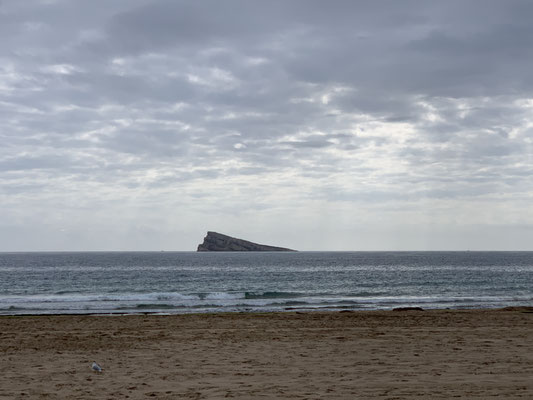
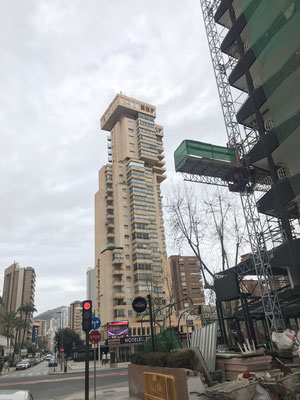
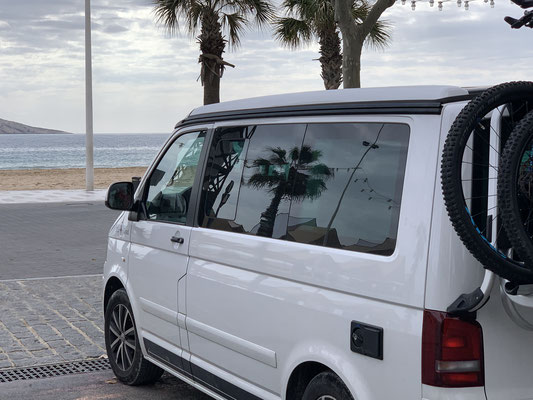
Doch zuerst einmal geht es vorbei an dem „Badeort“ Benidorm. – Doch was ist aus dem kleinen Fischerdorf geworden? – Ende der Siebziger fuhr Torgits Uroma, Oma oder Tante noch hier hin. – Inzwischen ist Benidorm angeblich eines der beliebtesten Urlaubsziele, nicht nur an der Costa Blanca, sondern am gesamten Mittelmeer geworden. Doch was zieht die Menschenmassen hier hin? Angeblich ist die Stadt für ihr Nachtleben bekannt. Eines kann die Menschen ganz sicher nicht hier hinziehen, die Schönheit der Stadt. Dabei ist der Ausblick von der Promenade gar nicht so übel. Doch sobald man sich umdreht bekommt man fast einen Infarkt. Die Skyline der Stadt ist das hässlichste was wir auf unserer Tour bisher gesehen haben. Nicht ohne Grund nennt man sie „spanisches Manhattan“. – Mehr als 300 Wolkenkratzern, fast 400 Gebäude mit mehr als 12 Stockwerken, prägen das Stadtbild.
With a population of just 80,000, it is said to have the highest density of high-rise buildings in the world. - We take a closer look and actually find a spot for Hector in the front row, right on the beach. Today it's even quiet on the beach. But we don't want to imagine this place at the height of summer. So we turn around and quickly leave the beach and the town.
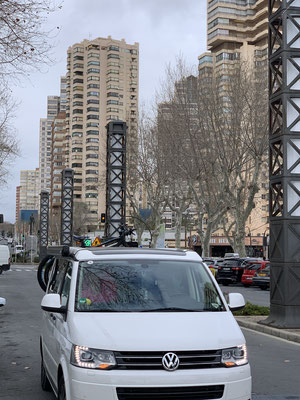
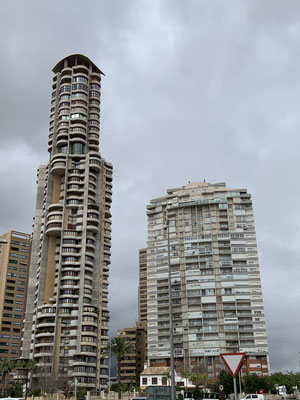
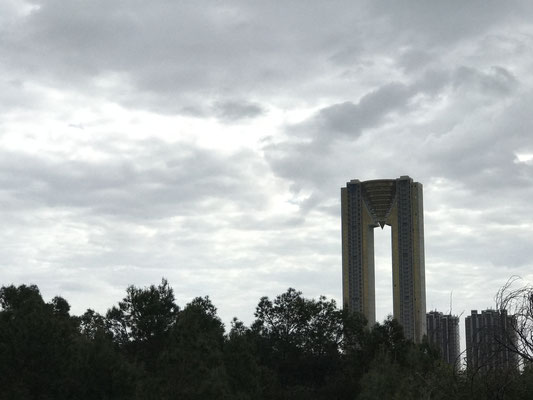
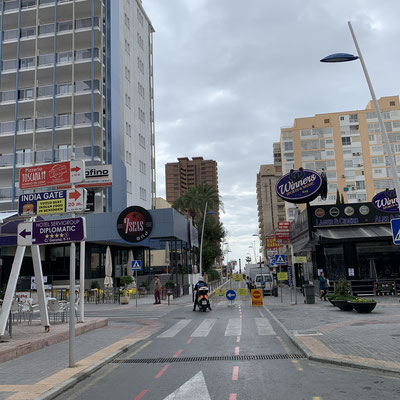
Aller guten Dinge sind drei!? – In diesem Sinne kann in Bezug der Wahl unseres Schlafplatzes doch nur Gutes auf uns zu kommen. Denn zweimal hatten wir nun hintereinander Glück, oder war dies Zufall? – Es fällt zu, was fällig ist. 😉
We are a little intimidated after Benidorm. Could it be that after this juggernaut there are beautiful beaches to be found again? - Barely 35 minutes later and a tour through mountainous terrain, we find ourselves in Carrer Llac Maracaibo, in Dénia - 38°51'35.7″N 0°02'22.8″E - The road ends in a small parking lot right on the beach. On the right is a three-storey building complex. The shutters are down on almost all the windows. To the left, an abandoned plot with a small, dilapidated finca. According to park4night, you can safely spend the night here. That already looks good. We stop for lunch first, today is the day for a snack. Afterwards, we take care of the blog a little.
But at around 5 p.m. we decide to see if the location can still be topped. According to park4night, a few minutes further on, in the same town, there are two more spaces on opposite sides of a small river that flows into the sea. - Shortly afterwards, we park Hector at the end of Carrer Llac Huron - 38°51'52.7″N 0°01'18.6″E. There is only a small wall separating us from a villa that is being built or renovated here. - A few anglers are sitting by the water. The place is great. Unlike this morning, when I had to explore my way into the water over large pebbles, I find fine sand here. I'm already looking forward to tomorrow and swimming in the sea.

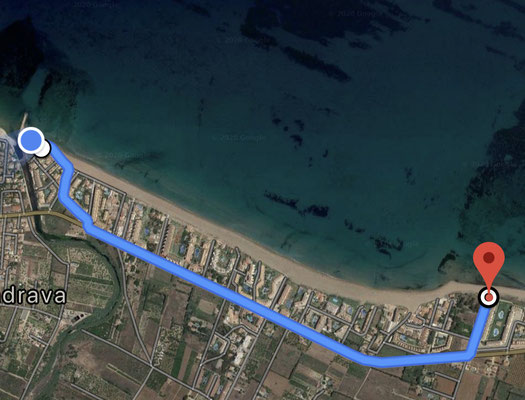
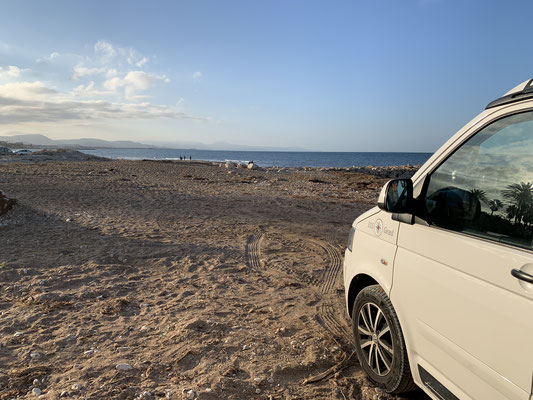

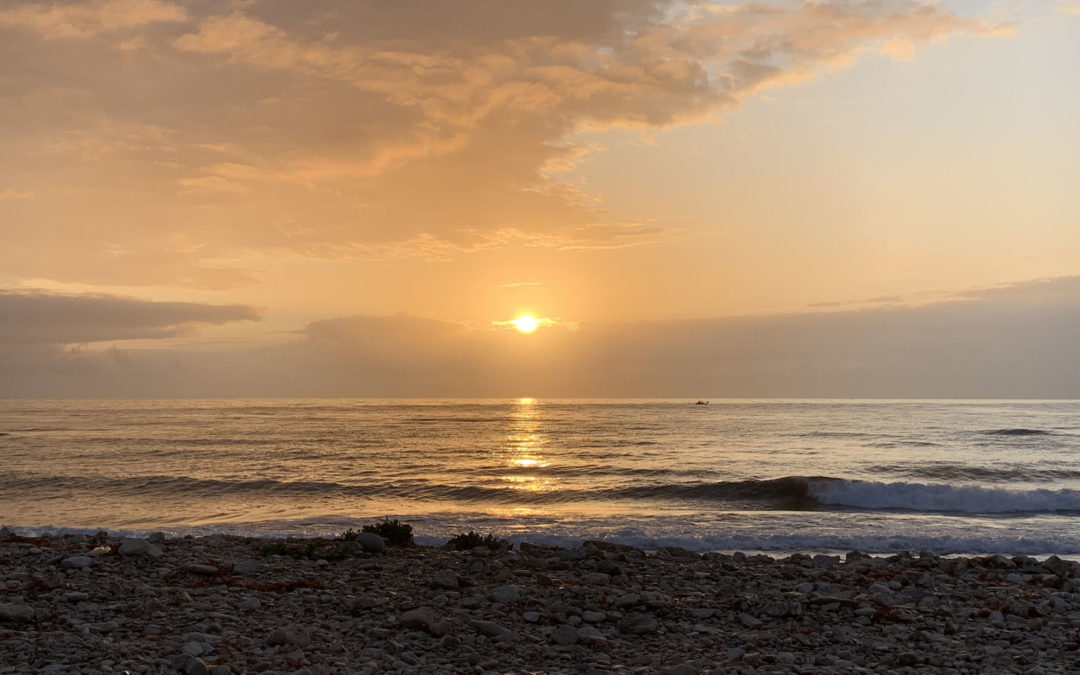
Recent Comments